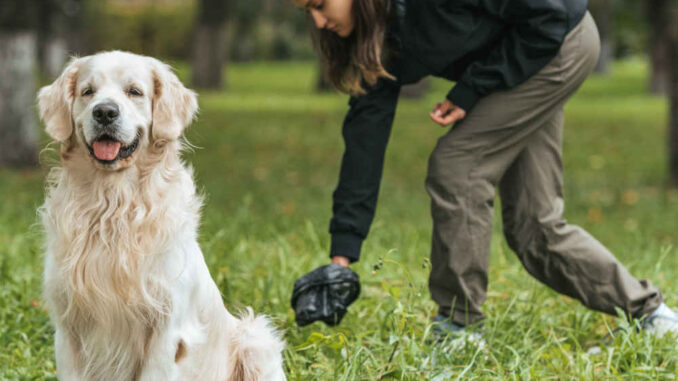
This article was updated on June 21st, 2023

Keeping an eye on your dog’s poop colors can be one of the most important things you do for their health. What you may find while watching their poop is changes in color, consistency, and the presence of mucus in dog poop. Seeing yellow mucus in your dog’s poop is not uncommon and something vets see on a near-weekly basis.
In this article, I will discuss when yellow mucus is a reason to worry and what you can do at home to help your dog. We will review the top causes of yellow mucus in dog poop and discuss how yellow mucus differs from just yellow dog poop or mucusy poop. Let’s get started!
Is Yellow Mucus in Dog Poop a Reason to Worry? Is it An Emergency?
Of all the colors that your dog’s poop can turn, yellow is usually not the most worrisome. But that doesn’t mean that it should be ignored, especially if your dog is also exhibiting other signs, such as:
- Blood in the feces
- Dehydration
- Vomiting more than 2 times in 24 hours
- Weight loss
- Fever
- Not eating
- Abdominal pain
- Yellow mucus in poop after 48 hours of home treatment (see section on home remedies)
Any of these signs could indicate that your dog has a more serious issue going on that will likely not clear on its own, and you should seek veterinary attention.
When is Yellow Mucus Less of a Concern?
Not every bowel movement that’s yellow and has mucus is going to warrant a vet visit. There are some instances where you can monitor your dog or try some at-home treatments. This is especially true if your dog isn’t showing any other signs. A little inflammation may not be a bother at all and will clear up on its own within a couple of days.
Example: Maggie, a Terrier Mix, pooped yellow/orange mucus, as shown on the picture below:
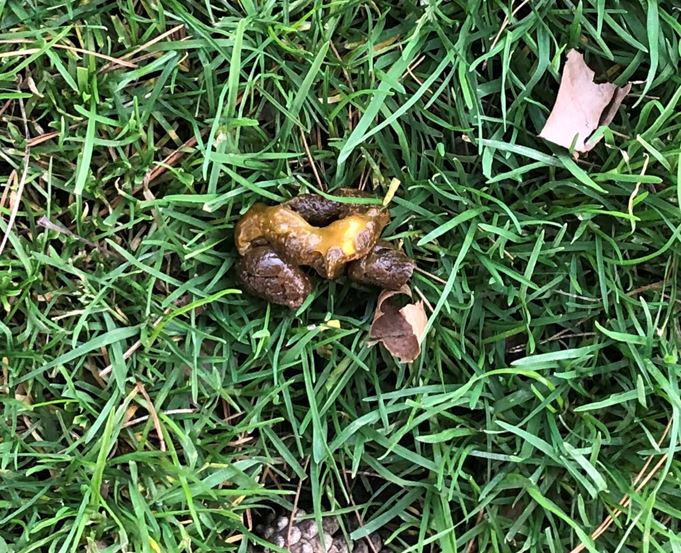
Our veterinarian’s assessment about Maggie: “This dog poop in the picture above is yellow with quite a bit of mucus. Yellow poop is usually the result of an intestinal issue that causes the feces to move through the system at a faster rate typically due to inflammation. The mucus also indicates inflammation of the intestine. This can be the result of something the dog ate, parasites, inflammatory bowel disease, an infection, or inflammation in other organs related to the digestive tract (pancreatitis). See your vet if your pup is also not eating, vomiting, lethargic, losing weight, or if you see blood in the poop.”
What You Can Dog At Home For Yellow Mucus in Dog Poop
We just told you that yellow mucus in dog poop isn’t always an emergency situation. In fact, it can sometimes respond to at-home treatments with no vet appointment necessary. However, that doesn’t mean that your vet should be kept out of the loop. Consider contacting them so that they know what’s going on and what you’re going to try. This will just make it an easier transition if you should have to bring your dog in later.
1. Monitor
If your pup has had a bowel movement or two that is yellow and mucusy but not overly soft or bloody, is eating normally, not vomiting, and doesn’t have a fever, you may choose to watch them for a couple of days. Chances are, they’re having some mild inflammation from a bug they caught or something a little disagreeable that they ate and just need a moment to work through it.
2. Bland Diet
You may also try giving your dog some boiled chicken and rice or one of these other tried and true bland diets just to give their digestive system a little rest. Bland diets are easily digestible so that the guts don’t have to work overly hard while trying to heal from a minor issue. If possible, feed this bland diet in small amounts throughout the day as another way of not overloading the system. Be sure to provide plenty of fresh water as well.
What are the Most Common Causes of Yellow Mucus in a Dog’s Poop?
As we said before, yellow dog poop with mucus is usually related to a digestive upset with inflammation in the large intestine. But just what are the causes of those upsets? Here we go:
1. Infection
The intestines are subject to a number of viral, bacterial, or parasitic infections. These can happen secondarily to something like a foreign object or come by themselves. Infections can cause inflammation in the intestines, causing them to shed and expel their mucous layer onto the feces. If this infection also increases the transit time in the intestines, you may be looking at a yellow color as well, along with soft or runny feces. You may even see streaks of blood. Dogs may be vomiting, not eating, have a fever, and have abdominal pain on top of all that.
Mild infections without any other signs of vomiting, not eating, etc., may be monitored at home. Consider feeding a bland diet in small amounts more frequently for a few days to give your pup’s gut a break. If things don’t get better within 48 hours or they start showing other signs, see your vet.
2. Eating Something They Shouldn’t
There are many things that a dog eats that really shouldn’t. Whether it be an undigestible such as a toy or stick, it can also mean rotten, moldy, or human food. All of these can lead to inflammation in the stomach and intestines which can increase transit time, leading to bile staining and yellow poop as well as mucus. Dogs may also have a fever, vomiting, not wanting to eat, and stools may be yellow, mucusy and soft, and runny. There may be blood as well.
If a dog has yellow mucus in their poop without any other signs, you may just sit on it and wait. Feeding a bland diet, such as boiled chicken and rice, may help the digestive tract to rest while it heals and clears the issue. However, if stools aren’t starting to return to normal within 48 hours or other signs of not eating, abdominal pain, or vomiting show up, it’s time to see your vet.
3. Food Intolerance
Food intolerance happens when there is an ingredient in your dog’s food that they have a hard time digesting. The body can develop inflammation in the intestines, and food may move through the digestive tract much faster because of it. This means that yellow mucus in poop can be commonly found. You may also see diarrhea, vomiting, and weight loss. The best treatment is finding out which ingredient is bothersome, usually the protein source in their food, and removing it.
Fortunately, there are many novel protein diets available that use proteins other than the standard run-of-the-mill chicken or beef that may be causing the problem. Speak to your vet about how to do an elimination diet and to make sure their yellow mucus poop isn’t due to something else.
4. IBD, Cancer, and other Causes of Inflammation
Irritable bowel and inflammatory bowel disease (IBD) both create inflammation in the large intestine. Inflammation almost always leads to mucus in a dog’s poop. It can also mean yellow poop if the digestive time is sped up. Cancer can also create inflammation in the digestive tract based on where the tumor is. Dogs may have yellow mucus in their poop that is also soft or runny and may have blood. Vomiting and weight loss may accompany as well.
Irritable bowel and IBD may be managed with a diet change and anti-inflammatories or immune suppressants. Cancer may be treated with surgical removal and chemotherapy or radiation.
Different Shades of Yellow Poop and What They Mean
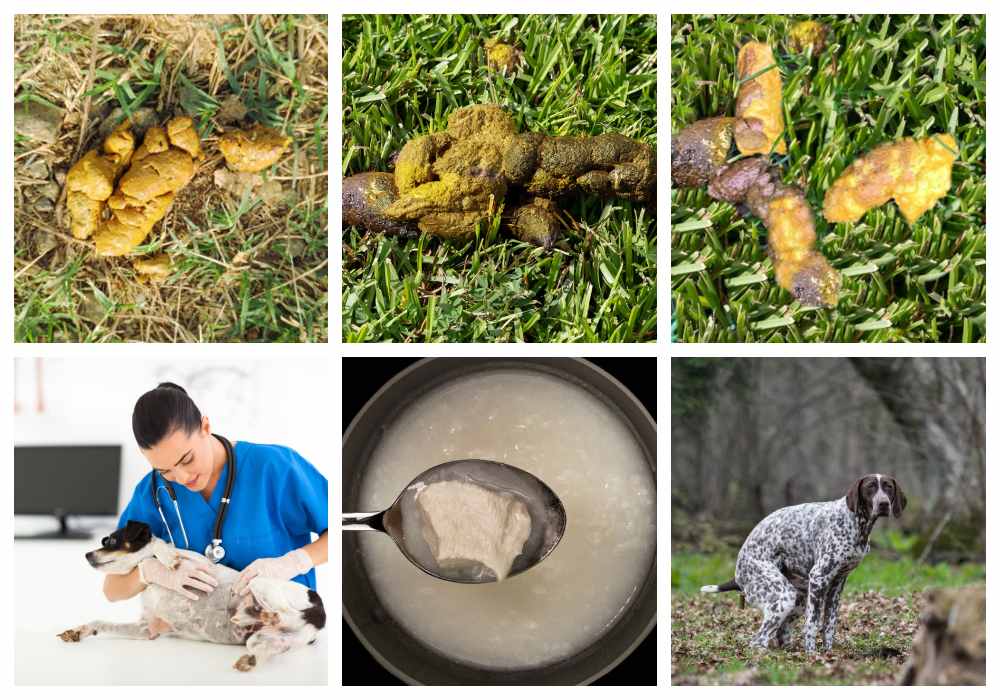
Yellow dog poop deserves its own article, which in fact, we have here. But for a quick overview, let’s look at the different shades of yellow dog poop (including yellow dog poop with mucus) and what could be causing them.
1. Bright Yellow
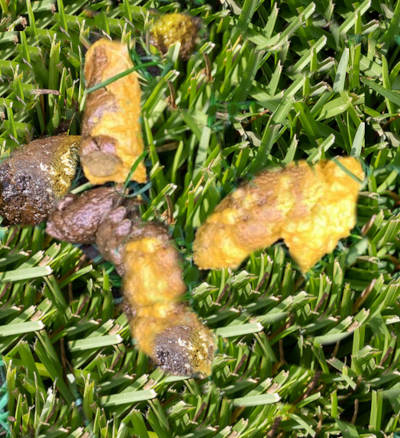
Bright yellow dog poop usually points to an issue with the digestive system. The short story is that bile, produced by the liver to aid in digestion, is absorbed in the intestine. When something abnormally speeds up the digestive process, that bile isn’t absorbed and instead remains to stain the poop bright yellow. Depending on the cause of the digestive issue, you may see a normally formed stool, or your dog could have soft stools, diarrhea, blood, or mucus as well.
2. Darker Yellow
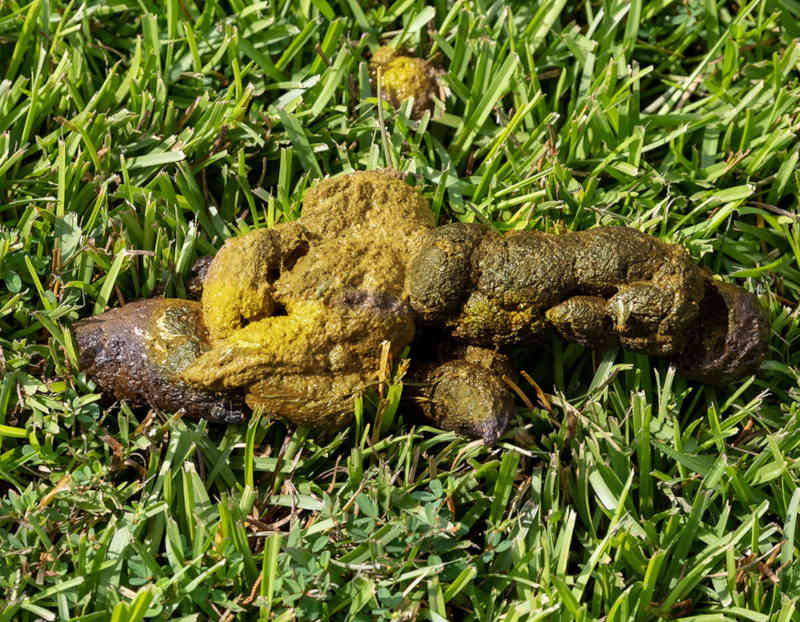
Darker yellow dog poop may come from similar issues as bright yellow poop, plus a few new ones. Often changing diets can turn dog poop yellow for a short time; eating something yellow, or something that upsets a dog’s stomach can also turn poop yellow. Again, depending on the cause, your dog’s poop may have a normal consistency but yellow color, or it may be soft, runny, or mucousy.
3. Yellow with Mucus
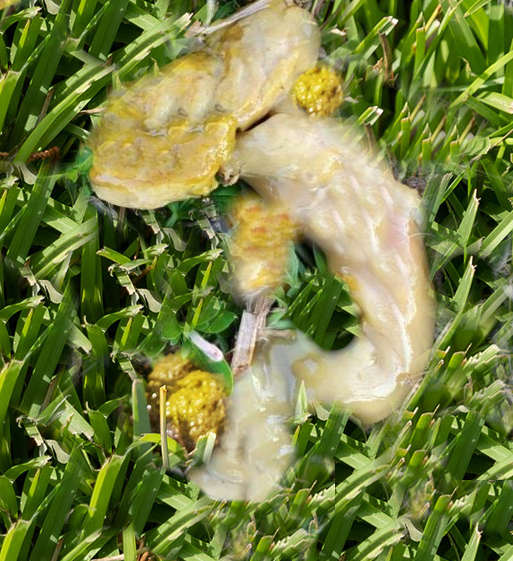
The large intestine has a mucus layer that is needed to lubricate the bowel movement through the colon. When some of that mucus layer is expelled along with the bowel movement, it points to intestinal inflammation, mainly in the colon, or large intestine. When coupled with a yellow color, you’re more than likely looking at something that’s irritating the digestive system. Mucus in yellow dog poop will, of course, appear yellow in color but also slimy, greasy, or even a little frothy. Whether that’s an infection, foreign body, parasite, liver issue, or change in diet, you may also see soft stools, diarrhea, blood, or a normal consistency.
What are the Veterinary Treatments for Yellow Mucus in Dog Poop?
If, on the other hand, your dog’s yellow mucusy poop is runny, bloody, or your pup is having issues with vomiting, not eating, or having a fever, it’s time to see your vet. They will start by trying to diagnose the exact cause. This may require fecal, blood, and urine samples, x-rays, and ultrasound.
Your vet will try to determine if your dog has an infection, parasite overload, foreign body, or something else behind their inflamed colon. From there, they will choose the best treatment. This may be giving a parasiticide, antibiotics, fluids, anti-inflammatories, or immune suppression medications. You may also need to change your pup’s diet to something with a novel protein or a limited ingredient option to pinpoint any dietary intolerances.
Some cases may need surgery to remove a foreign body or tumor.
Most cases of yellow mucus in dog poop are going to have a fairly good outcome as long as the inciting cause is gotten under control. Potential life-threatening issues can be diarrhea and vomiting that lead to dehydration, a foreign body that causes an intestinal puncture, or a tumor that can’t be successfully treated.
There is a wide range of causes for yellow mucus in dog poop, which can mean the amount you pay is wide-ranging as well. An exam and basic diagnostics will run around $100-$300, while more in-depth testing may be closer to $500. Surgeries may cost $750-$1,500 or more.
Other Things to Know About Yellow Mucus in Dog Poop
Simply seeing yellow mucus in your dog’s poop isn’t where this journey ends. You can help your dog, and your vet, by taking a picture or sample of the yellow mucus. This will help them get an idea of what you saw, and a sample can be used to test for parasites and other causes.
If you can’t do this, make a note of the consistency, color, odor, and any other distinguishing attributes. Remember when the yellow poop started, if your pup is showing any other signs, and what you have done at home.
Related posts:
Disclaimer: This website's content is not a substitute for veterinary care. Always consult with your veterinarian for healthcare decisions. Read More.




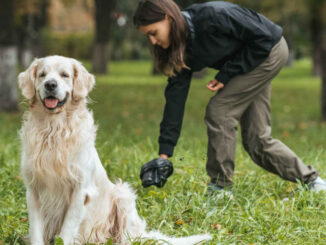
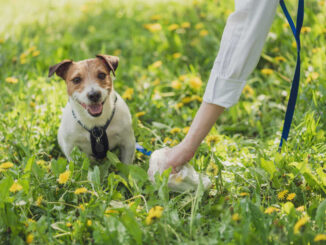
Be the first to comment